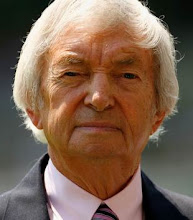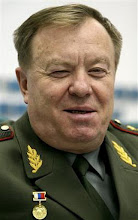
Invasion barges assemble on the Alcovian side of the Borka during preparation for the counter-offensive following the invasion of 1854.
The border between eastern Alcovia and western Iqenistan is a 500 mile stretch of the river Borka. Snaking its way out of the Capaccian Mountains the stretch where the two neighboring nations meet is known to Alcovians as the "Meandering Sea", a name derived from the wide, slow-moving and twisting waters of the Borka. It is along this watery span that Alcovia's flotilla of river boats, gunboats and monitors patrols, keeping a vigil against invasion from the east.

An early Alcovian river monitored, based off of American Civil War designs. Since the mid-nineteenth century, Alcovia has endeavored to maintain their presence on these waters, following the invasions of 1832 and 1854 when large sections of eastern Alcovia were seized and occupied by Iqenistani troops. Since their repulsion and the reclamation of those territories, a steady program of acquisition and production of vessels suitable for river patrol and fresh water naval bombardment has been a major priority. Beginning with the purchase and importation of foreign vessels, and later by the construction of native vessels, often copied or under license from foreign shipyards, Alcovia now boasts a sizable river flotilla of some 150 vessels ranging in size and type from small coal-fueled patrol steamers to fully armored gunboats boasting multiple turrets. 
Alcovian customs and border patrol vessel. This vessel is a conversion of a civilian river craft carrying light guns and a contingent of ASA border marines. Known affectionately by their crews as "Pirate Brigs". Service in the Apa Sirviciul Alcovia, is considered a service for cutthroats and desperate men. Operating far from the capital and with a great degree of autonomy, the sailors of this branch of Alcovian service are known for their brash, often loose adherence to the law. They are also renowned for a certain roguish nature and lack of couth that more “civilized” circles often find distasteful. For these reasons, ASA servicemen spend little time in central or western Alcovia and usually hail from the rougher eastern towns and villages who have a history of river piracy, wrecking and smuggling. In fact, many Alcovian sailors aren’t even from Alcovia at all, having been either pressed or recruited into service from foreign nations or from foreign vessels plying the Borka.

An early Alcovian river monitored, based off of American Civil War designs.

Alcovian customs and border patrol vessel. This vessel is a conversion of a civilian river craft carrying light guns and a contingent of ASA border marines. Known affectionately by their crews as "Pirate Brigs".
These foreign servicemen are most often confined to the ASA special border marines. Specializing in trans-riverine operations, hit and run and interdiction, these men are often sent on strike missions against targets across the river and into Iqenistani territory. These men are hard, often veterans or deserters from other country’s armed forces who pride themselves on their craftiness, skill in combat and the die hard attitudes. One of their most famous mission to date was the storming of the river town of Kuzbhani in 1916 at the southern tip of the Iqenistani/Alcovian border where some 150 border marines rescued Countess Natavya Kishinug, daughter of king Ilya’s brother Vitali Chubakov.

A modern Alcovian "Bortha" class river monitor sporting two 15cm guns in a forward turret. Six of these vessels built between the years of 1915 and 1925.
The princess had been abducted as a political prisoner when her private yacht was forced to dock in Kuzbhani after experiencing engine troubles on its return from the Black Sea. The military garrison commander of Kuzbhani, Rikan Alabash, had seized her from the residence of the city’s mayor Ulmor Fedaha. Alabash had hoped to use her as a bargaining chip in his own military and political agendas. When the border marines were through with their mission, however, Alabash was slain and the garrison of Kuzbhani devastated.
 |
| APA patrol boat, hidden under tree limbs and other foliage along the river bank. |
In the aftermath of this brief conflict, Fedaha insisted that Iqenistan not use this as an excuse for war by his people in a very public display of regret at the actions of his countryman, Alabash. In this operation, only three border marines were killed, all of their bodies returned to Alcovia where they were entombed as national heroes and the reputation of the border marines was reaffirmed and their national character established as the go-to men for dirty jobs.






















